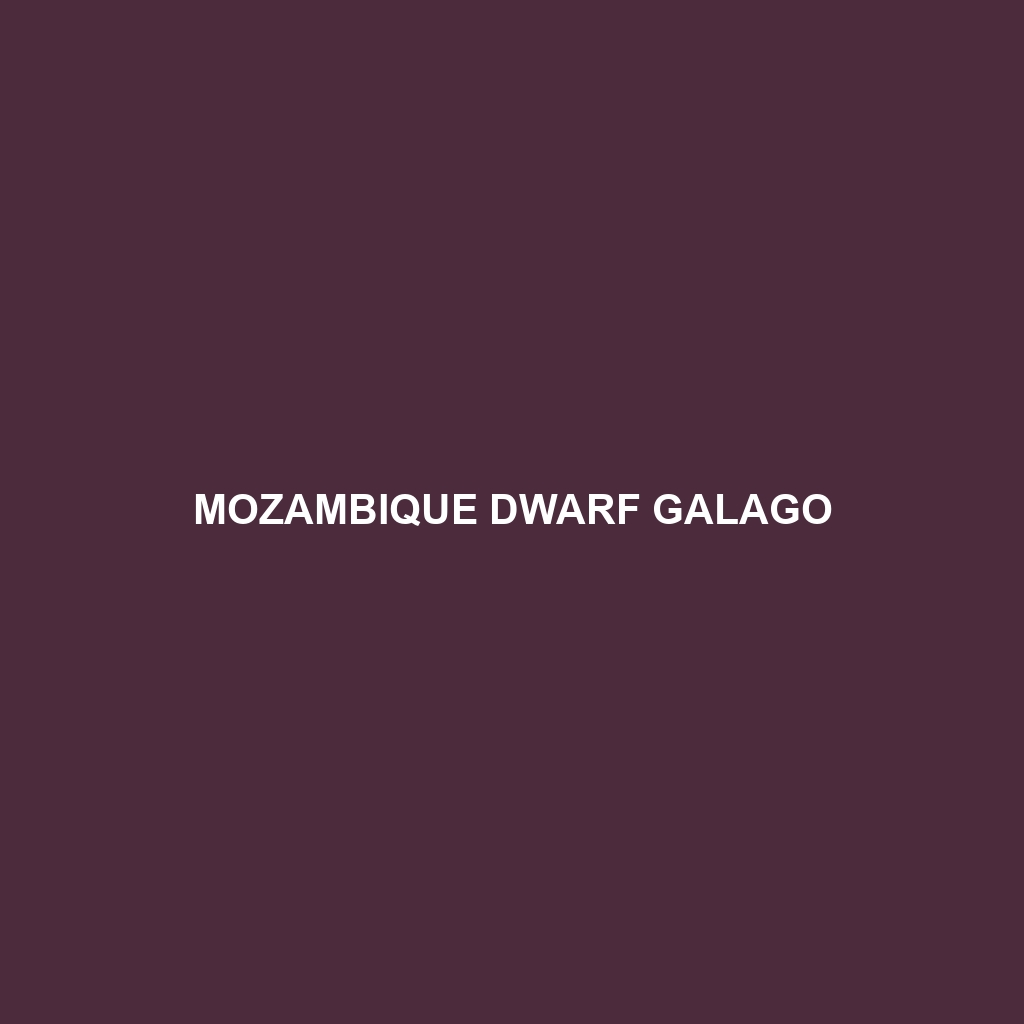Mozambique Dwarf Galago
Common Name: Mozambique Dwarf Galago
Scientific Name: Otolemur crassicaudatus
Habitat
The Mozambique Dwarf Galago is primarily found in the eastern regions of Africa, specifically in Mozambique, Malawi, and parts of Tanzania. They thrive in dense, tropical rainforests and woodlands, where they can find adequate cover and food sources. These primates prefer areas with abundant tree canopies that allow them to navigate through their arboreal environment effectively.
Physical Characteristics
The Mozambique Dwarf Galago is a small primate, typically measuring between 20 to 25 centimeters in length, excluding its long tail, which can be almost as long as its body. They have a distinctive coat that varies in coloration from grey to brown, often accented with a lighter underside. Their large, expressive eyes are adapted for nocturnal vision, while their soft, velvety fur allows for silent movement through the trees. One of the most notable features is their elongated fingers and toes, which assist in grasping branches and climbing.
Behavior
These fascinating creatures are primarily nocturnal, exhibiting active behavior during the night. Mozambique Dwarf Galagos are known for their remarkable agility in jumping and climbing, often leaping distances of up to 6 meters. They are social animals and typically live in family groups, which communicate through a variety of vocalizations, including calls and whistles. This social structure enables them to effectively evade predators while foraging for food.
Diet
The diet of the Mozambique Dwarf Galago mainly consists of fruits, leaves, flowers, and insects. They have a particular preference for ripe fruits, which provide essential nutrients. Their omnivorous feeding habits make them adaptable, allowing them to take advantage of seasonal food availability. The ability to consume both plant material and insects contributes to their survival in the wild.
Reproduction
Mozambique Dwarf Galagos have a breeding season that typically occurs during the rainy months, when food resources are plentiful. Females give birth to a single offspring after a gestation period of about 120 days. The young are cared for by their mothers and begin to learn essential survival skills while staying close to their family unit. They reach sexual maturity at around 1 to 2 years of age.
Conservation Status
Currently, the Mozambique Dwarf Galago is classified as “Least Concern” by the International Union for Conservation of Nature (IUCN), but it faces threats from habitat destruction and fragmentation due to deforestation and agricultural expansion. Conservation efforts are essential to maintain their population in the wild and address habitat loss.
Interesting Facts
– Mozambique Dwarf Galagos are sometimes referred to as “bush babies” due to the sound they make when startled.
– They have an excellent sense of smell and rely on it to locate food during their foraging activities.
– Despite their small size, they play a crucial role in seed dispersal, contributing to forest growth and regeneration.
Role in Ecosystem
In their natural habitat, the Mozambique Dwarf Galago serves an important role as a seed disperser, which aids in the regeneration of fruiting trees and plants. Their feeding habits help maintain the ecological balance, and they serve as prey for larger predators, illustrating their integral position within the food web. The loss of this species could disrupt local ecosystems, highlighting the importance of their conservation.
